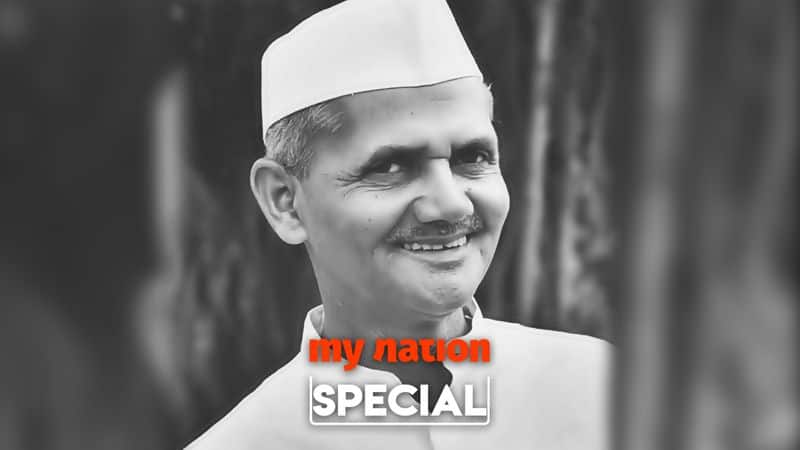Director Vivek Agnihotri of the ‘Buddha in a Traffic Jam’ fame will release his ‘The Tashkent Files’ delving into the mysterious death of India’s second Prime Minister Lal Bahadur Shastri in Tashkent sometime just before the 2019 polls
New Delhi: As if ex-PM Manmohan Singh’s biopic ‘The Accidental Prime Minister’ was not enough to embarrass the Congress just before the 2019 general elections, a movie claiming to unravel the mystery behind the “murder” of yet another Congress former prime minister from outside the Gandhi-Nehru family is set to rock the Grand Old party before the elections.
Director Vivek Agnihotri of the ‘Buddha in a Traffic Jam’ fame will release his ‘The Tashkent Files’ delving into the mysterious death of India’s second Prime Minister Lal Bahadur Shastri in Tashkent sometime just before the 2019 polls.
Incidentally, ‘The Accidental Prime Minister’ is releasing on January 11, 2019, the 53rd death anniversary of Shastri.
A political murder mystery
In an exclusive interaction with MyNation, Agnihotri said the movie was a “murder mystery” and that it would “change the political narrative of the country”. Having already finished shooting, the film is in the last stages of post-production, he said. “We are looking to release the movie in February or early March, he added.
The movie comes with a stellar star cast including veterans such as Naseeruddin Shah, Mithun Chakravorty, Pankaj Tripathi and Pallavi Joshi.
“It has been 50 years and everybody has been demanding, from people to tall political leaders such as Vajpayee and George Fernandes, that the mystery should be dealt with. Immediately after Shastri died people started demanding a post-mortem. It was not done. The family officially requested then acting PM Gulzarilal Nanda, but nothing was done. The family requested Indira Gandhi and Rajiv Gandhi, again to no avail,” Agnihotri said.
“It has been raised in Parliament so many times. While in this country no one gets to know the truth, I decided to file a lot of RTIs to look into the matter. Every RTI said there is no information. We are the largest democracy and our second PM dies immediately after a war and we don’t have any information and no documents. How strange!”
Whether the movie would hurt the Congress? “I don’t care about the Congress. The movie is as honest and truthful and frank and hard-hitting as I am. This will change the political narrative about Indian politics. It will tell us whether this democracy is about the right to truth or not. In Congress’s regime, no truths were unveiled. They started the culture of cover-ups.”
Agnihotri also expects to encounter more hurdles in releasing his movie after the brouhaha over ‘The Accidental Prime Minister’. “It will be a new struggle, but I shall do that,” he said.
Shastri had died just a day after an accord was signed on January 10, 1965, with Pakistan ending the 17-day war between the two countries. The agreement was mediated by the then USSR.
While the former PM was said to have suffered a massive heart attack, there have been serious allegations of an assassination and a cover-up. While Indira Gandhi had succeeded him as the PM, Shastri’s death kicked up a storm as his doctor had declared that he had been fit and without any signs of a heart condition.
Half lies and distraught family
Meanwhile, historian Anuj Dhar, the only person to have written a book on Shastri’s death ‘Your Prime Minister is Dead’, told MyNation that Shastri was in all likelihood murdered and there was an elaborate cover-up, both in India and outside. Dhar was consulted for the movie too.
“The death of Shastri got mired in controversy right from the time his body arrived in Delhi, hours after his demise in Tashkent early morning on January 11, 1966. Right at the airport, there was an attempt to prevent his family members from taking a look at the body,” Dhar said.
“Shastri’s wife Lalita noted, the body had taken a dark blue hue, even though the PM had been dead barely for a few hours. There were some white patches on the face,” Dhar added.
Lalita Shastri had recalled that they were not allowed to go near the body even when it was being bathed. It was only after much insistence that we were allowed. Shastriji’s face and body had turned blue and were greatly swollen. The body was so bloated that the vest had to be torn off it and the kurta could be removed only with difficulty.
“Certain cut marks were noted in the stomach area and on the back of the neck. An official explanation, coming after four inexplicably long years, had it that the cut in the stomach was made for introducing the embalming fluid in the body. That there was an incision on the neck was flatly denied. But the family members and others clearly saw this cut mark and there was no reason why they should be disbelieved,” Dhar said.
In his book, Dhar wrote mentioned the words of former Delhi Congress chief and Shastriji’s follower Jagdish Kodesia: “We saw a cut at the back of the neck and a cut on the stomach where sticking plaster had been pasted to block the outflow. But the cut at the neck was pouring blood and the sheets, pillows and the clothes used by him were all soaked in blood… We approached the leadership with the request that the body be sent for post-mortem. We were told not to make such a request as this would adversely affect international relations.”
Last Updated Dec 30, 2018, 10:46 AM IST











![Salman Khan sets stage on fire for Anant Ambani, Radhika Merchant pre-wedding festivities [WATCH] ATG](https://static-ai.asianetnews.com/images/01hr1hh8y86gvb4kbqgnyhc0w0/whatsapp-image-2024-03-03-at-12-24-37-pm_100x60xt.jpg)
![Pregnant Deepika Padukone dances with Ranveer Singh at Anant Ambani, Radhika Merchant pre-wedding bash [WATCH] ATG](https://static-ai.asianetnews.com/images/01hr1ffyd3nzqzgm6ba0k87vr8/whatsapp-image-2024-03-03-at-11-45-35-am_100x60xt.jpg)



